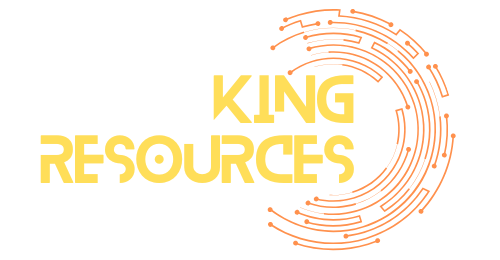Dreaming of that cozy cabin in the mountains or a sun-soaked beach house? Buying a second home can feel like a blissful escape, but navigating lender requirements can sometimes feel like deciphering hieroglyphics. Fear not! With the right knowledge, you can turn that dream into reality without losing your sanity—or your sense of humor.
Table of Contents
ToggleUnderstanding Lender Requirements for Second Homes
Lenders evaluate several criteria when approving loans for second homes. Credit score stands as a crucial factor. Most lenders prefer a minimum score of 620, although higher scores can enhance loan opportunities. Debt-to-income (DTI) ratio also plays a significant role. Generally, lenders accept a DTI ratio below 43%, but some may allow higher ratios depending on other financial strengths.
Down payment expectations differ for second homes compared to primary residences. Many lenders require at least 10% to 20% down, with investment properties demanding even higher deposits. Proving sufficient income remains essential. Lenders will likely request documentation of stable income to demonstrate borrower reliability.
Asset verification is another important step. Having cash reserves can strengthen an application. Lenders often look for borrowers to possess enough funds to cover six months of mortgage payments. Interest rates for second homes can differ from primary residence rates. Buyers should compare options to secure the most favorable terms.
Understanding local market conditions helps borrowers gauge affordability. Lenders use property appraisal to ensure that home values align with loan amounts. Compliance with local zoning laws may also influence approval. Ultimately, knowing these requirements allows potential buyers to prepare and present a strong case to lenders.
Key Eligibility Criteria
Lender requirements for a second home include specific eligibility criteria that potential buyers must meet to secure financing.
Credit Score Requirements
Lenders typically prefer a credit score of at least 620 for second homes. A higher score can improve the chances of approval and may secure better interest rates. Those with scores above 740 generally qualify for the most competitive rates. Checking one’s credit report for errors before applying can help identify areas for improvement. Keeping credit utilization low contributes positively to scores.
Down Payment Expectations
Most lenders expect a down payment between 10% and 20% for second homes. A larger down payment may result in lower monthly payments and can demonstrate financial stability. Investment properties usually require even higher down payments, often around 20% to 30%. Planning finances ahead of time helps ensure readiness for these upfront costs. Saving aggressively or considering financial assistance options can make the process smoother.
Debt-to-Income Ratio
The debt-to-income (DTI) ratio remains a vital factor in loan approval. Most lenders seek a DTI below 43%, although some may accept higher ratios if compensating factors exist. Evaluating monthly debts against gross income aids in understanding personal financial health. Maintaining a lower DTI increases the likelihood of approval while improving loan terms. Reducing existing debt before applying strengthens a financial profile.
Documentation Needed
Lenders require specific documentation to assess an application for a second home. Ensuring all necessary paperwork is prepared increases the chances of a smooth approval process.
Income Verification
Lenders focus on verifying income to determine borrowers’ ability to repay loans. Applicants often present recent pay stubs, W-2 forms, or tax returns. Self-employed individuals may need to show profit and loss statements alongside personal and business tax returns for the last two years. Supplemental income sources, such as bonuses or rental income, should also be documented. Consistent income history enhances credibility and demonstrates financial stability.
Asset Documentation
Assets need clear documentation to establish financial security. Common forms of asset verification include bank statements and investment account summaries. Lenders typically look for sufficient cash reserves to cover at least six months of mortgage payments. Additional documents may include proof of any significant assets like real estate or stocks. Showing liquid assets supports a borrower’s case for loan approval and reassures lenders of their financial position.
Types of Loans Available
Various loan options exist for purchasing a second home, each with unique requirements and benefits. Understanding these can help borrowers make informed decisions.
Conventional Loans
Conventional loans typically require a down payment of 10% to 20%. Lenders often prefer credit scores above 620, though higher scores yield better interest rates. Borrowers with a score of 740 or greater secure favorable terms. DTI ratios under 43% are commonly accepted, helping to ensure financial stability. Documentation for income and assets must be thorough, including recent W-2 forms or tax returns. Since these loans aren’t backed by the government, they may have stricter qualifications compared to government-backed loans.
FHA Loans
FHA loans cater to those seeking lower down payment options, starting at 3.5%. These loans are designed for buyers with credit scores as low as 580. DTI requirements for FHA loans can be more flexible, permitting ratios up to 50% in certain circumstances. Borrowers appreciate the less stringent income verification process, making it simpler to secure financing. While these loans are government-backed, they still require mortgage insurance, which might affect overall cost. Understanding FHA loan benefits can make homeownership more accessible, especially for first-time buyers.
Common Challenges in Securing a Second Home Loan
Securing a loan for a second home presents several challenges. Lenders require borrowers to meet stringent credit score standards, typically preferring a minimum of 620. A low credit score diminishes approval odds and may lead to higher interest rates.
Debt-to-income ratios significantly impact loan approval. Most lenders accept ratios below 43%. Potential buyers with higher ratios might face obstacles unless they can demonstrate additional financial strengths that offset their DTI.
Navigating down payment expectations poses another challenge. Buyers usually need to provide 10% to 20% for a second home, whereas investment properties often demand 20% to 30%. Insufficient down payments can lead to increased monthly payments and demonstrate financial instability.
Proving consistent income and verifying assets create further hurdles. Lenders expect borrowers to provide documentation that shows cash reserves covering six months of mortgage payments. Borrowers lacking adequate savings may encounter difficulties in securing financing.
Interest rates may vary compared to primary residence loans. Understanding the differences in rates can help buyers accurately assess their financial commitments. Comparing various lender options is essential when seeking the best terms for a second home loan.
Complying with local market regulations also affects the approval process. Zoning laws must align with the intended use of the property. Knowledge of these regulations proves crucial for prospective buyers.
Finally, thorough preparation of documentation ensures smoother approval processes. Lenders scrutinize recent pay stubs, W-2 forms, and bank statements. Self-employed individuals must supply additional records to satisfy income verification requirements. By addressing these challenges proactively, potential buyers can enhance their chances of securing a second home loan.
Tips for Meeting Lender Requirements
Evaluating credit scores is vital for prospective second homeowners. Most lenders favor a score of at least 620, which enhances approval opportunities. Aiming for a score above 740 can secure better interest rates.
Examining the debt-to-income (DTI) ratio is essential too. A DTI ratio below 43% generally meets lender expectations, although some may accept higher ratios based on other financial aspects. Understanding monthly debts against gross income can highlight one’s financial position.
Preparing for a down payment involves significant planning. Down payments for second homes typically range from 10% to 20%, while investment properties usually require 20% to 30%. Saving aggressively or exploring financial assistance options can alleviate pressure.
Proving income and verifying assets play a critical role in the application process. Lenders often seek cash reserves that cover six months of mortgage payments. Documenting bank statements or investment accounts can demonstrate financial stability.
Gathering the necessary documents ahead of time streamlines the approval process. Recent pay stubs, W-2 forms, or tax returns establish income proof. Self-employed individuals must compile additional paperwork to confirm income.
Identifying suitable loan options aids in the financing journey. Conventional loans typically necessitate a down payment of 10% to 20%, while FHA loans offer lower down payment options starting at 3.5%. Familiarizing oneself with these options can lead to informed financial decisions.
Addressing potential challenges is crucial for buyers. Stringent credit standards and adequate down payments are common hurdles. Awareness of interest rate differences compared to primary residence loans enables better planning. Consistent preparation and understanding local market regulations foster smoother transactions.
Conclusion
Navigating lender requirements for a second home can be daunting but understanding key factors can simplify the process. By focusing on credit scores DTI ratios and down payment expectations potential buyers can position themselves favorably. Preparing necessary documentation and demonstrating financial stability are essential steps in securing financing.
With the right knowledge and proactive planning individuals can confidently approach lenders and increase their chances of approval. Whether considering a cozy cabin or a beachfront property being well-informed about the lending landscape makes the journey to owning a second home more achievable and enjoyable.









